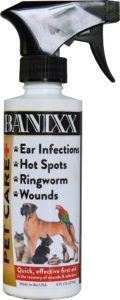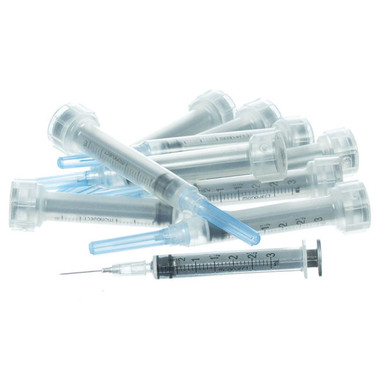What you need to know about psoriasis in dogs
Estimated 0 min read

Learn how to care for your dog’s psoriasis
We all just want our pups to be comfortable. Why else do you think we spend so much money on things like dog beds and thunder blankets?
Still, every now and then health issues arise that can make our pooch profoundly uncomfortable. One of the most concerning yet least studied health issues in dogs is psoriasis.
So, we wanted to empower dog owners with all of the information about dog psoriasis that’s available right now. Hopefully, by the end of this short blog, you’ll know what dog psoriasis is, how prevalent it is, how to identify it, and how to begin treating it at home.
Facts about canine psoriasis
- Dogs can get psoriasis just like people, however it’s much less prevalent than other skin disorders like seborrhea or eczema
- In dogs, it’s most often caused by a weak immune system which destroys healthy skin cells
- Canine psoriasis is usually treated with a combination of topical solutions and dietary changes.
Can dogs get psoriasis?
Yes, dogs can develop psoriasis just like people do.However, psoriasis in your pup is much less common than in humans.
Similarities and differences between psoriasis in dogs and humans

Humans develop psoriasis at any age.
There are a number of similarities between dog psoriasis and psoriasis in humans. Similar to humans, psoriasis can be caused by a weak immune system, excessive cell creation, or allergies. Symptoms-wise, both dogs and people with psoriasis can suffer from itching, scaly or flaky skin, and redness.
That aside, there are noticeable differences between a dog’s psoriasis and that of a human. Whereas humans can develop psoriasis at any age, dogs have not been observed to develop psoriasis across such wide age ranges. Additionally, one tell-tale symptom of human psoriasis – pitted, thick nails – isn’t typically seen in dogs with psoriasis.
What are the symptoms of psoriasis in dogs?
In dogs it’s likely to present with many of the same symptoms as its human counterpart.Some of the most common symptoms include:
- Excessive itchiness and/or dandruff
- The development of silver-colored scales
- Bleeding or cracked skin.
- Scaly patches of skin across the scalp, sacral areas, tips of elbows, or legs
- A newfound reluctance to walk.
- Red patches on the skin
While knowing the symptoms of canine psoriasis is good, it’s also important to be able to recognize its closely related cousins: seborrhea and eczema.
What are the differences between seborrhea in dogs and psoriasis?
Seborrhea, or seborrheic dermatitis, is a skin disorder that can cause scaly, flaky, itchy, or red skin in dogs.These symptoms are the result of dogs’ sebaceous glands overproducing the oily substance sebum, which eventually irritates their skin.
Whereas psoriasis is characterized by rough, red scales that grow into thick, silver scales across the body, seborrheic scales vary in color. They can be white, yellow, red, or brown, and they tend to feel very greasy. Often seborrheic scales will be found on the scalp, the oiliest parts of the face and on the upper chest.
It’s important to note that seborrheic scales are often thinner and less well-defined than psoriasis scales. Dogs with seborrhea will also tend to feel less pain than if they had psoriasis, which is one small silver lining in having this disorder.
What are the differences between eczema and psoriasis in dogs?
Canine psoriasis and eczema in dogs share one thing in common: itching. However, while eczema in dogs can cause an intense itch, psoriasis feels like something else is going on. With psoriasis, dogs may feel like their skin is getting stung or burned.
Furthermore, the physical symptoms of eczema in dogs differ from the symptoms of psoriasis. The primary sign of a dog with psoriasis is a severely inflamed skin with red, scaly patches. This is different from the symptoms of eczema in dogs, which is characterized by dry skin that may crust, ooze, or be swollen.
There’s also a substantial difference in where psoriasis and eczema manifest on dogs’ bodies. Whereas psoriasis on a pup usually shows up on their elbows, knees, palms, back, or chest, eczema shows up in places where their bodies bend. This means you’re most likely to find eczema on your dog’s neck, wrists, inner elbow, or on the opposite side of their knee.
What causes psoriasis in a dog?
Although it hasn’t been fully determined, it’s believed that canine psoriasis is primarily the result of a compromised immune system. Once their immune system is compromised, their body begins attacking their T-cells which causes cell abnormalities. Over time, this leads to an overproduction of cells that causes thick patches of skin cells to collect on the surface of the body. As a result, the body creates an immune response which leads to persistent itching.
How is psoriasis diagnosed in dogs?

Vet examining dog for psoriasis
Diagnosing your pup’s psoriasis is relatively straightforward, thankfully.
Once at the vet, they will begin with a physical examination of your dog’s body. During this exam, they’ll look for patches of skin that are red, dry, scaly, cracked, or bleeding. Any of these are good indications that your dog may be suffering from a skin disorder like psoriasis.
If psoriasis appears to be the issue, your veterinarian will likely want to take a sample of your dog’s skin. This is so they can examine it under a microscope and look for biological evidence of psoriasis. If they see evidence of psoriasis in the sample, they will make a formal diagnosis for your pup..
How to treat psoriasis in your dog
Your veterinarian’s plan for treating your dog’s psoriasis will depend on the severity of the disorder. Once established, most treatment plans for canine psoriasis involve a combination of topical treatments and dietary changes.
Topical treatments for dogs with psoriasis
The best topical treatments for canine psoriasis will help moisturize dry or cracked skin and relieve any irritation or itching. Many topical solutions available on the market contain ingredients such as potassium, permanganate, or primrose oil. These compounds will help clear up patches of sore skin and reduce itching.
That being said, we’re partial to solutions like Banixx when it comes to treating psoriasis in dogs at home!Banixx is clinically-proven to provide instant, sting- and odor-free relief from a variety of skin disorderswithout relying on pesky antibiotics or steroids. Simply spray or apply Banixx to the affected area twice daily and, within just a few days, your pet’s skin should be much less itchy or irritated. With Banixx, relief really is that simple.
Dietary changes for dogs with psoriasis
Some veterinarians have found that changing dogs’ diets has successfully abated some of the worst symptoms of psoriasis. However, it’s not simply a matter of increasing protein or decreasing carbohydrates. Rather, making dietary changes for dogs with psoriasis should be undertaken with the goal of boosting the immune system and increasing the resilience of their skin.
To that end, try to create a dog diet of unprocessed, natural foods with the assistance of your veterinarian and a canine nutritionist. The goal here is to slowly eliminate foods that may be triggering an averse psoriatic reaction. Foods to avoid include those that are high in fillers, such as meat meal, flour, and corn products. Many processed foods include these fillers.
Additionally, your veterinarian may recommend that you add dietary supplements to your dog’s food. This will be recommended if your vet believes these supplements can help control, contain, or even remedy your dog’s psoriasis. To achieve this, your vet will likely recommend supplements that have been shown to assist with compromised immune systems in dogs. Some possible supplements your veterinarian may recommend include Zinc, Omega-3 or -6, Vitamin C, and Vitamin D. You can also look for unprocessed foods that contain, for example, high levels of Vitamin C. Vegetables that come to mind are parsley, kale or broccoli. Our pup just Loves broccoli so this would be an easy one for him….ditto kale…parsley may be a bit too aromatic for his nose however! Eggs are a good source of zinc but they must be cooked for dogs to eat. Well, you get the picture here!
How to prevent psoriasis in your dog
The best way to prevent psoriasis is to do things that strengthen his/her immune system. Luckily, helping your dog build up their immune system can actually be a ton of fun for both of you!
Even just being outside each day for twenty minutes with your dog can help stave off Vitamin D deficiency in both of you. Vitamin D, of course, supports healthy skin and tissue function – which is critical for protecting against disorders like psoriasis. Plus, keeping fit is a great way to burn excess fat. This is important, as fat is the body’s largest endocrine gland and produces over 40 different hormones that can exacerbate inflammation caused by disorders like psoriasis.

Dog getting some Vitamin D outdoors.
Additionally, dogs’ bodies crave touch. (Can you see where we’re going with this yet?). As such, there is a limited body of research which suggests that massaging and petting your dog can reduce the production of stress hormones in their body. This,according to a 2014 research review, can contribute to enhanced immune function and decrease inflammatory responses. This petting action also happens to be a great therapy for health of the dog’s owner…just readour blogon this one.
Look, we didn’t say learning about psoriasis in dogs was going to be fun. However, it is undeniably important. The more ailments and maladies you’re familiar with, the more able you’ll be to keep your pooch happy and healthy!
Read more Banixx Blogs
For sure, we know by now that you care a lot about your dog’s health – otherwise you wouldn’t be reading this blog! That’s why we hope you’ll come back to ourblogto learn more about how to keep your furry, four-legged friend happy and healthy. If, on the other hand, you are interested in how toClean up messy eye boogers or goopor how to maintain your dog’s healthwhen you can’t afford a vet…we have some suggestions there.



















